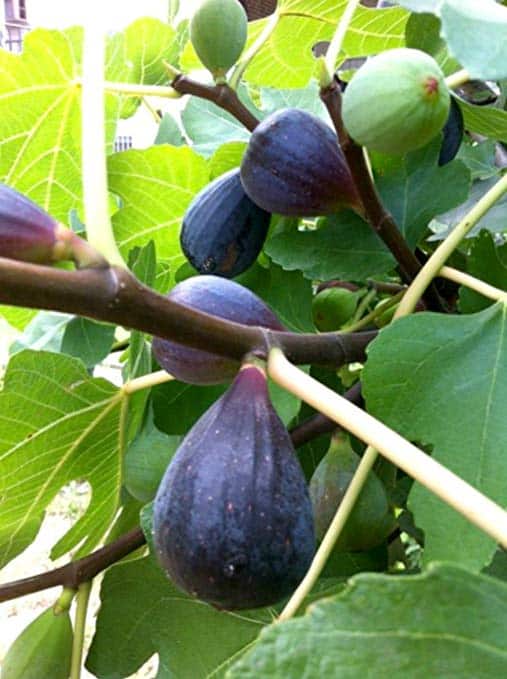BLACK FIG TREE
In local dialect “Lu Ficu “
Ficus carica L.
Moraceae
 BLACK BURSA FIG: STORY, FEATURES AND USE
BLACK BURSA FIG: STORY, FEATURES AND USE
Thanks to its dark, sweet and juicy fruits, the black Bursa fig (Ficus carica L.) is a highly appreciated variety. It has been cultivated for millennia, and Turkey is one of the ideal regions for its growth. It has become a leading product in both export and culinary use.


Fresh consumption



The black fig tree is very resistant and capable of adapting to hot, dry climates. It can grow in poor soils, as long as they are well drained.





It has been included in SiGi’s orchard to assess the differences with its relatives, namely the White Adriatic fig and the Brogiotto fig. In addition, having fig trees with different ripening periods allows for a longer and more continuous enjoyment of their fruits.

These contents were written and researched by the owners of the SiGi Agricultural Company in collaboration with the students of the Agricultural Technical Institute of Macerata.
If you would like to contribute to expanding the descriptions of these varieties, you can send an e-mail to info@agricolasigi.it
We launched the e-museum of ancient fruits thanks to a social farming project of the Marche region. The translation is by komalingua
This project enabled five young people with cognitive impairments, aged 20 to 25, to work on the farm. They were selected by psychologists and Anffas social workers, supported by the professional educator Il Faro and supervised by UniMc researchers. Coldiretti Marche handled communication and distribution.
This unique and challenging project led to the creation of both a physical and virtual museum of ancient fruits in SiGi’s garden. This is not only a great honor but also a significant commitment that we are willing to continue with everyone’s support. You can contribute to our projects by choosing our products, or you can do so directly here:

